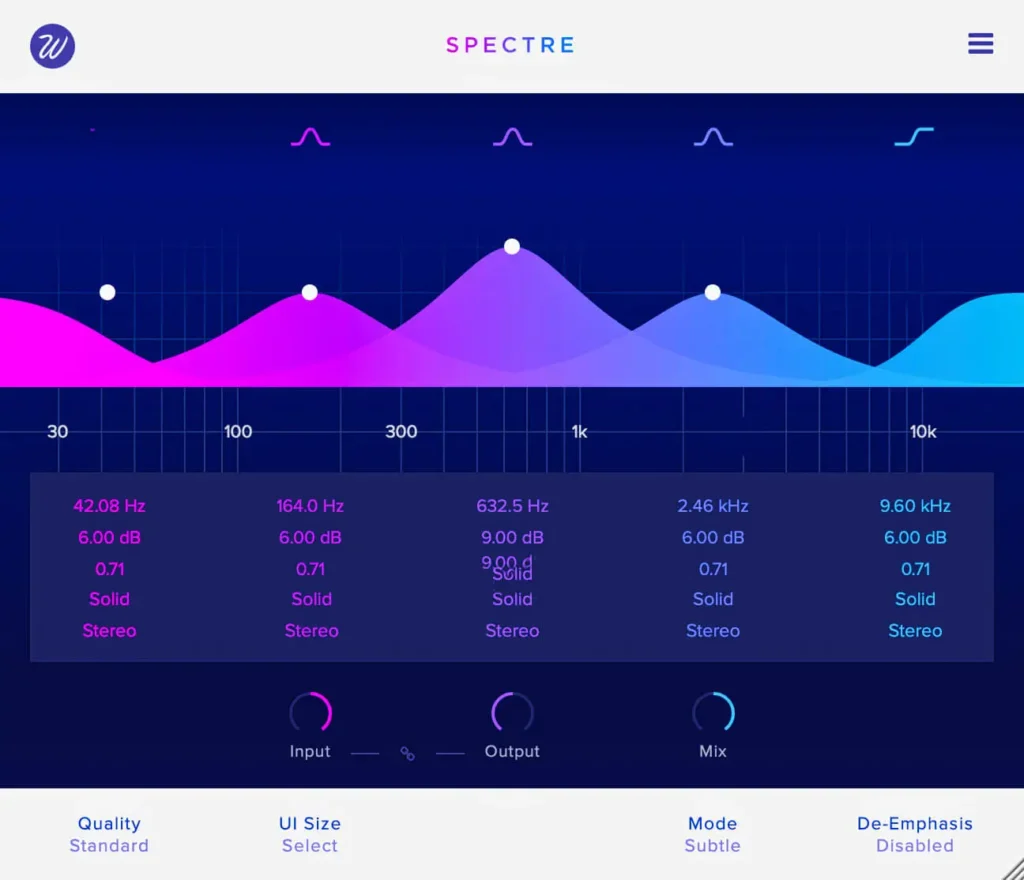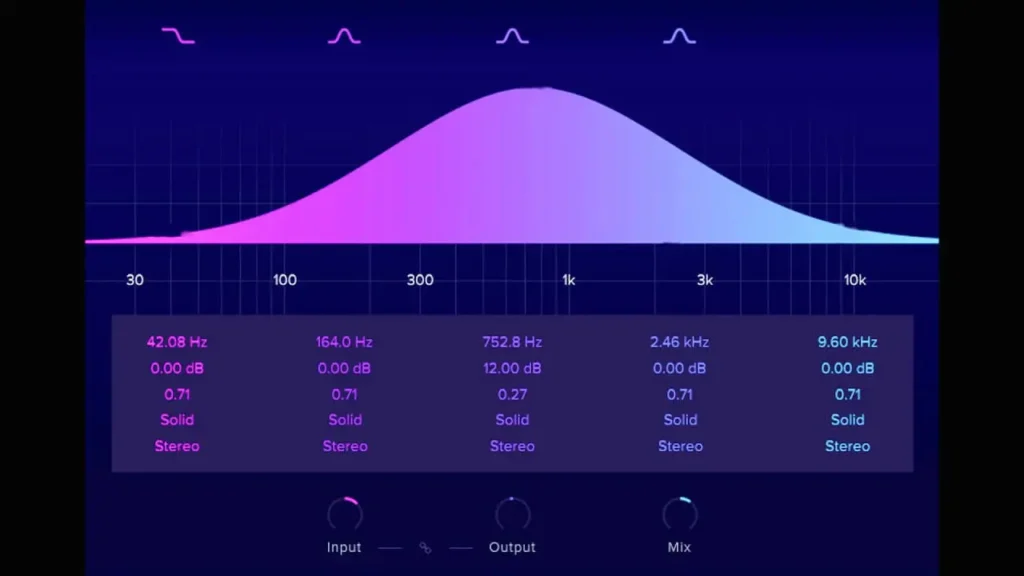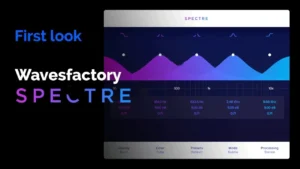Saturation and distortion are key elements that play a major role in sound design, mixing, and mastering. Wavesfactory Spectre is a multiband saturation plugin that has completely redefined the way we approach sound shaping.
In this blog post, I’ll dive into its features, functions, and real-world uses, sharing helpful insights for anyone looking to take their audio production to the next level.
Introduction
It’s a powerful sound-shaping tool that combines the features of a parametric equalizer with those of a harmonic enhancer or exciter.
In terms of appearance, this plugin looks like a parametric EQ. Still, this plugin has a different function, unlike the parametric equalizer plugins that are just used to cut or boost the frequencies. It adds harmonic content to the sound and tries to enrich the audio signal by adding depth and character to it.
Now, let me tell you what the word “Spectre” means. The word specter refers to the plugin’s ability to produce the “phantom” harmonics that were not present in the original recording.

This plugin is designed to emulate the sound texture of classic analog recording hardware with the help of its various saturation algorithms. The plugin offers ten high-quality saturation models, which include:
- Tube
- Warm Tube
- Solid
- Tape
- Diode
- Class B
- Bit Reduction
- Digital
- Rectify
- Half Rectify
Key Features:
Here is the list of all the features of his plugin.
Multi-Band Enhancer:
This plugin offers only the five parallel boost-only parametric bands, allowing users to target specific frequency ranges effectively. Each band can be customized for gain, frequency, and Q factor.
Saturation Algorithms:
The plugin includes ten different saturation algorithms, which are listed in the above section. This allows users to achieve different tonal colors and textures.
Oversampling Options:
This plugin also offers oversampling. With 4x and 16x oversampling modes available, it ensures pristine audio quality with minimal aliasing, even if the user tends to use aggressive settings.
Different Processing Modes:
This plugin offers different processing modes. It allows the Users to process mono or stereo signals and choose between left/right or mid/side processing modes. This flexibility allows for precise control over how the enhancement is applied.
User-Friendly Interface:
This vst offers a user-friendly interface. This plugin’s graphical display mimics a traditional parametric EQ layout, making it friendly for users familiar with EQ workflows. This design simplifies the process of adjusting parameters while providing visual feedback on how each filter affects the audio signal.
How does it work?
This plugin works by analyzing the audio signal. The first step of its analysis is to determine the volume difference between the input and output signal using the inbuilt parametric EQ.
After that, the user has to pull up EQ-like bands, which total 5 in number. When the user pulls one or more, the plugin will apply saturation to the area under that band.

This is the simple working of this plugin.
Wavesfactory Spectre Review
This review reflects my personal opinion and experience with the plugin. I have purchased the plugin myself and have no affiliation with the company. I have not received any compensation or free products for this review. My opinions are entirely my own, and they may differ from yours. The content of this review is intended to provide information and assistance to potential users.
I tested this plugin for a long time, and here is my honest review of its pros and cons. First, I will list its pros.
Pros:
- In this plugin, the EQ functionality is enhanced with harmonics. In this way, this plugin can be used for creative sound design, which the traditional EQ plugins can’t.
- 10 saturation models are present in this plugin. In this way, users can apply different flavored saturation to the sound to have unique textures.
- The interface of the plugin is very simple. It looks like a traditional EQ, which makes it easy to navigate and use.
- Mid/Side options are also available in this plugin. In this user can also add saturation to the stereo signal of the mix to achieve unique texture.
Cons:
- One notable drawback of this plugin is the lack of input/output metering or monitoring capabilities. This absence can make it hard to gauge how much enhancement is being applied visually.
- While mid/side processing is available, you can only process mid or side at a time, not both simultaneously. This is a serious limitation that may require additional instances of the plugin in some cases.
- While using this plugin, I realized that the Tape saturation algorithm does not accurately replicate the brightness typically associated with high-quality tape machines. Instead, it leans more towards a cassette-like sound, which may not suit all applications.
